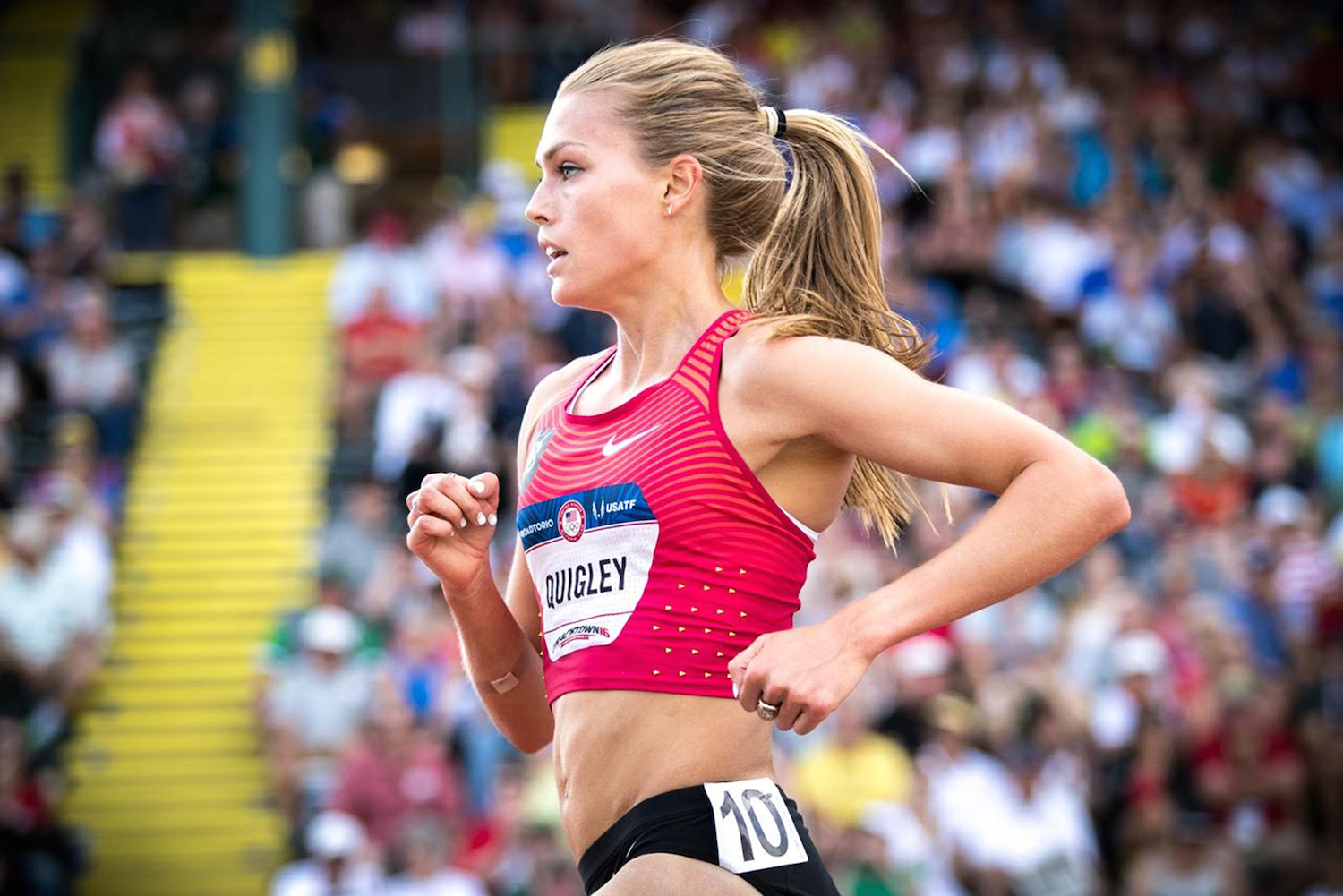Little sister. Coach’s daughter. Model. State champion. NCAA champion. Colleen Quigley has outrun her previous identities to become an Olympian. The Nerinx Hall grad finished eighth in the women’s steeplechase in Rio, helping to re-establish respect for U.S. distance running.
You grew up in a running family. How much did that contribute to your success?
My dad [Gaylerd Quigley] was such an amazing high school coach. I hope those girls at Nerinx know how good they have it. I’m really competitive and hard on myself, so often I would be really upset with myself over a sub-par race or workout. My dad would be the one helping me through it and figuring out how to fuel that into positive energy.
I was also very competitive with my brother, Dan. At first, I was always “Dan’s little sister.” It wasn’t until college when I was an All-American my freshman year and runner-up at NCAAs my sophomore year that Dan became “Colleen’s brother.”
Goal achieved.
Just kidding. Dan has always been a big supporter of mine, doing anything he could to help me reach my goals. Having him as well as my old high school coach there at the Trials and Olympics was so, so special.
Why the steeplechase, and what was the biggest challenge in the transition?
My Florida State coach, Karen Harvey, told me from the first day that she wanted me to do the steeple. She held the World Record back in the day, so I knew I was in good hands. The biggest thing for me was learning to hurdle. She brought on Terry Long, who has coached the likes of Kim Batten, world record holder in the 400-meter hurdles in 1995. We went from, “That was horrible,” to, “OK, that was slightly less horrible,” and at the end of the year, “That was actually pretty good.” He told me last year that I would make the World Championships team before I believed it myself.
For decades, Americans were an afterthought in steeplechase. This summer, Evan Jager won silver and Emma Coburn won bronze. Why the turnaround?
It’s such a new event for women, added in 2008, so people often didn’t take it seriously and chose to compete in the 5K or 1500 instead. Now, I think Americans are choosing the steeplechase not because they can’t succeed in other events but because they want to steeple. I’d go so far as to say that the majority of athletes competing in the steeplechase at NCAAs are better hurdlers than the majority of steeplers on the world stage. We’re teaching our athletes correctly how to compete in the event.
Where is home now? How much time to you spend there versus competing and visits to St. Louis?
I live in Portland, Oregon, home of the Bowerman Track Club, and my coach, Jerry Schumacher. I spent 14 weeks at altitude this year, then a week of heat and humidity training in Wisconsin, a week at the Trials, and a month at the Olympics and in Europe racing after Rio. There were also about a half-dozen trips to Phoenix or Indianapolis to see doctors. I’m only home in St. Louis over Thanksgiving and Christmas.
Favorite place to run in St. Louis?
Hands down, Forest Park!
What’s next?
I’m asking myself, “If I go another four years, could I get a medal in 2020?” In high school, I thought I’d be a professional model. Then, I decided to go to school and run track and cross country. In college, I thought I’d become a dietitian. Now, I’m a professional runner sponsored by Nike. I guess the moral of the story is to keep your mind open to options you never even considered and see where it takes you!
Author: Kathleen Nelson is a regular contributor to Terrain magazine.


An old friend and co-worker was Kevin Quigley . He worked at Anheuser Busch. He was an avid soccer enthusiast. I read your story in the St. Louis Post Dispatch today and wondered if he could be related to you. He’d be very proud. Congrats on your great running achievements.